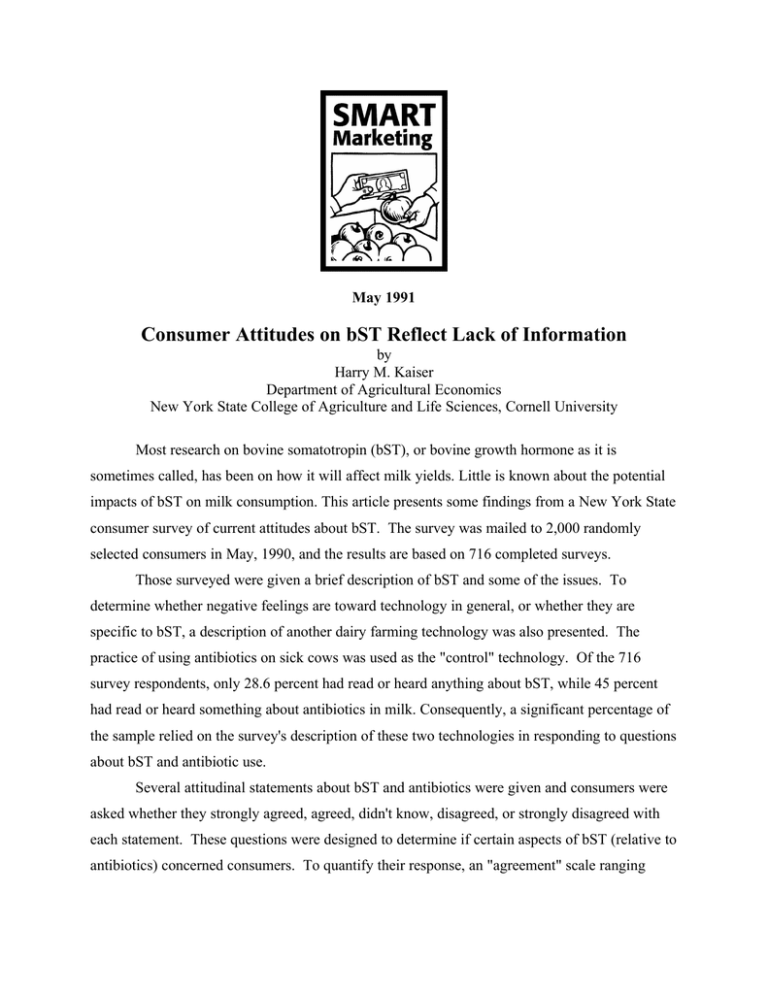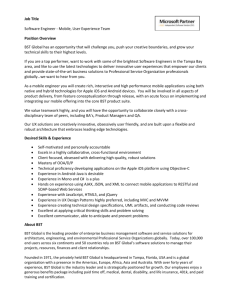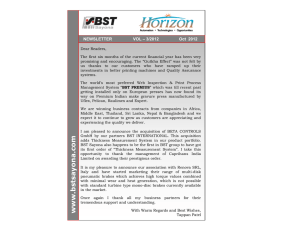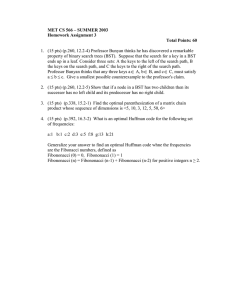Consumer Attitudes on bST Reflect Lack of Information
advertisement

May 1991 Consumer Attitudes on bST Reflect Lack of Information by Harry M. Kaiser Department of Agricultural Economics New York State College of Agriculture and Life Sciences, Cornell University Most research on bovine somatotropin (bST), or bovine growth hormone as it is sometimes called, has been on how it will affect milk yields. Little is known about the potential impacts of bST on milk consumption. This article presents some findings from a New York State consumer survey of current attitudes about bST. The survey was mailed to 2,000 randomly selected consumers in May, 1990, and the results are based on 716 completed surveys. Those surveyed were given a brief description of bST and some of the issues. To determine whether negative feelings are toward technology in general, or whether they are specific to bST, a description of another dairy farming technology was also presented. The practice of using antibiotics on sick cows was used as the "control" technology. Of the 716 survey respondents, only 28.6 percent had read or heard anything about bST, while 45 percent had read or heard something about antibiotics in milk. Consequently, a significant percentage of the sample relied on the survey's description of these two technologies in responding to questions about bST and antibiotic use. Several attitudinal statements about bST and antibiotics were given and consumers were asked whether they strongly agreed, agreed, didn't know, disagreed, or strongly disagreed with each statement. These questions were designed to determine if certain aspects of bST (relative to antibiotics) concerned consumers. To quantify their response, an "agreement" scale ranging from 1 to 5 was constructed, where 1 indicates strong agreement, 3 indicates that the respondent did now know, and 5 indicates strong disagreement. With respect to perceptions about safety, consumers appear to not have enough knowledge about bST and antibiotic use to form definite conclusions. The average response to the statement "milk will be safe to drink if the FDA approves bST" was 2.99 (recall that 3=do not know). Most consumers simply do not know enough about bST to judge its safety. In fact, only 3.5 percent strongly agreed and 7.6 percent strongly disagreed with this statement, while 40.6 percent did not know enough about bST to judge its safety. Consumers tended to agree slightly more to the parallel statement about the use of antibiotics in cows. The average response to the statement "milk is safe to drink even though farmers use antibiotics" was 2.83. More people strongly agreed (4.7 percent) and fewer people strongly disagreed (4.7 percent) with this statement compared to the bST response. Although the average of 2.83 is significantly different from the average response about bST (2.99), an average near 3 for both indicates that consumers need more information about antibiotics and bST. In terms of animal welfare perceptions, survey respondents felt that administering antibiotics to cows is more acceptable than giving cows supplemental bST. The average response to the statement "giving antibiotics to cows is OK" was 2.55. This is significantly different from the average response of 3.17 for the parallel bST statement that "giving bST to cows is OK." With respect to bST, this statement drew the largest strongly disagree response (11 percent) of all statements in the questionnaire. It is clear that antibiotics are viewed as more beneficial for cows than is bST since they cure illness. On the other hand, bST may not be viewed this way by consumers because bST is not a product perceived to benefit cows. Interestingly, consumers are neutral over the potential price effect benefits of bST and antibiotic use. Respondents were asked whether allowing bST and antibiotics use was beneficial "if it keeps down the price of milk." The average response to this statement was 3.18 and 3.15 for bST and antibiotics, respectively, which are not significantly different. Consumers' relative neutrality on the net benefits of bST and antibiotic use may suggest that the negative effect of consumers' uncertainty about the safety of bST and antibiotics outweighs the positive effect of a lower milk price. This may also result from the relative price inelasticity of demand for fluid milk. Consumers need more information about bST and antibiotic use before they can make a strong conclusion about these technologies. The bottom-line issue is consumer opinion on whether bST and antibiotic use should be allowed. Respondents were more inclined to feel that antibiotic use should be allowed than to agree that bST should be approved. The average response to the statement that "antibiotic use on dairy cows should be allowed" was 2.52. This is significantly different from the average response of 3.07 to the statement that "bST use on dairy cows should be approved." But, as was true for other responses, an average of 3.07 indicates there was not strong reaction for or against bST. For instance, only 10.5 percent strongly disagreed and 7 percent strongly agreed that bST should be allowed, while 38 percent were simply uncertain. There was more certainty and agreement that antibiotic use should be allowed than that bST should be approved. Only 4 percent of the sample strongly disagreed and 9 percent strongly agreed that antibiotics should be allowed, while 25.6 percent did not know. Again it appears that consumers need more information about bST before making more definite conclusions. In the absence of a strongly negative response to questions about the safety, or approval of bST use, these results indicate that education likely will greatly determine consumers' perceptions about both bST and antibiotics. The typical consumer needs to know more about what bST is and facts about milk safety. This suggests that the dairy industry might pursue an active educational strategy to deliver explanations and facts about these technologies to consumers. If such a strategy is not followed by the industry, and if bST opponents launch their own campaign, then the backlash to bST might reduce milk consumption.




